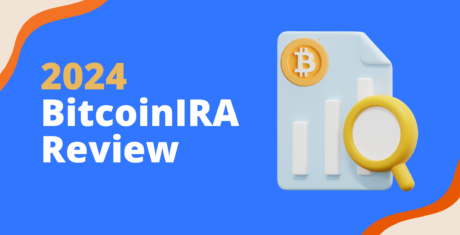Shortly after the advent of Bitcoin, as with all new technologies, iterations began to develop. Called ‘altcoins,’ standing for alternative coins, other cryptocurrencies were authored, each with a slight focus-shift from Bitcoin. Professing to offer tighter security, protection from censorship, or faster networks, digital currencies like Namecoin, Litecoin, and Dogecoin entered the cryptocurrency landscape, and a new digital asset class was born.
With the mining of the Genesis Block (the first block of Bitcoin to be generated), Satoshi Nakamoto put into production the very first blockchain protocol, which would go on to inspire hundreds of future cryptocurrencies. However popular and useful these varied digital assets were, the most significant and revolutionary aspect of Bitcoin was its underlying software, the blockchain. This style of distributed network-based computing, referred to as distributed ledger technology, was able to take the concepts and ideas behind traditional peer-to-peer networks and apply them to more diverse, challenging use-cases. The full extent of the power for blockchain technology to revolutionize industries and processes is far from known, even to this day, but a Russian cryptocurrency researcher in 2013 brought about a significant leap forward.
Blockchain, Iterated
In his proposal, titled “A Next-Generation Smart Contract and Decentralized Application Platform,” programmer Vitalik Buterin outlined his plans for the Ethereum Network. Buterin realized early on what would take many individuals years to conclude: the true genius behind Bitcoin was not the elegant simplicity with which it became a fully functional currency, but the distributed ledger technology Nakamoto developed as a foundation for the cryptocurrency. Blockchain technology, Vitalik realized, was capable of much more than transactions between two parties. It was this idea that ultimately lead to the Ethereum Network, a brand new, custom blockchain meant to carry out smart contracts software protocols designed to live in distributed networks.
The Ethereum whitepaper outlines several different applications of blockchain, from Bitcoin-like digital currencies to “having digital assets being directly controlled by a piece of code implementing arbitrary rules known as smart contracts,” (Ethereum whitepaper) among others. These use cases, despite being just a few of the many known areas where blockchain is believed to be influential (to say nothing of the scenarios yet to be discovered), made very clear the idea that blockchain had highly disruptive potential, were an implementation to be developed that cannot only handle, but is optimized for these scenarios. In creating Ethereum, Vitalik Buterin and his team set out to deliver a blockchain protocol with a built-in Turing-complete programming language (essentially a programming language that is both robust and flexible enough to be creatively applied; i.e. a type of universal computer code that can build any application for which the author can construct the logic). Thus solidity was born.
The Language of Smart Contracts
Solidity is the programming language of Ethereum. Using this powerful, high-level language, developers can create and implement their own smart contracts, distributed autonomous organizations, and tokens. Through the Ethereum Virtual Machine, developers can use Solidity to write their own blockchain-based applications. The combination of the Ethereum Network, its standalone blockchain, and Solidity revolutionized the world of blockchain and distributed letter technology, much the way Bitcoin did when it was created. Consider the internet: created as a means to facilitate faster communication, the endless potential of the world wide web was not fully realized until the first layer of protocols and toolkits was developed on top of the base: hypertext transfer protocol (HTTP), universal resource locator (URL), and hypertext markup language (HTML). These access points allowed for programmers and engineers to build out the infrastructure of the internet, creating websites and other applications. While Bitcoin was making waves in the financial and economic worlds as a revolutionary means of payment processing and value transfer, the Ethereum Foundation sought to provide on-ramps for others to leverage blockchain technology. Herein lies the inherent value of the Ethereum Network.
Beyond Payments Processing
While the Bitcoin community focused on developing the most efficient, “purest” cryptocurrency that performs as a means of payment processing, in line with the original vision for Bitcoin, the Ethereum Foundation took a different approach with their network and its native token, Ether. Raising over 25,000 Bitcoin in two weeks, valuing the network over $16 million USD, even at Ether’s modest early valuations the total market capitalization of the cryptocurrency was nothing to scoff at. Within two weeks of Ether’s initial coin offering, the cryptocurrency was the 7th most valuable digital asset network, surpassing the established Dogecoin, among others. What made this token so attractive was, and remains, the focus on smart contracts.
Using Ether as a means of transacting, users can program smart contracts on the Ethereum blockchain. These smart contracts, and the flexibility of the Solidity programming language, make developing on the blockchain accessible to a wide range of organizations. As of 2017, several enterprise-level consortiums have developed around Ethereum, taking advantage of the programmable nature of the Ethereum Network as a means to explore how blockchain technology can impact a wide range of industries. The most notable think tank is the Enterprise Ethereum Alliance, a work group that counts corporate giants like IBM, Microsoft, JP Morgan, and even Mastercard among its ranks. The Enterprise Ethereum Alliance, along with the newly established blockchain divisions of the member organizations as well as major global institutions like CME Group, Santander Bank, Goldman Sachs, and PricewaterhouseCooper, has spurred public interest in blockchain technology and fostered a great deal of confidence in Ethereum and the Ethereum Foundation.
As more banks and businesses explore and adopt blockchain technology, the need for more involved government regulation and research becomes more apparent. As of mid-2017, over eleven states within the United States have not only begun to enact blockchain-focused legislation, but states like Illinois and Nevada are actively promoting their ‘blockchain-friendly’ environments in attempt to encourage new startups within the sector to settle within their borders. The city of Dubai entered into a strategic partnership with IBM and ConsensysLLC, an incubator for new Ethereum-based companies and organizations, to research moving governmental processes to blockchain systems as part of its Smart Dubai initiative. Along with Dubai, the nations of Switzerland and Japan have proven to be highly open to adopting blockchain technology and its prospects for streamlining bureaucratic processes, in large part due to the customizable, programmatic nature of the Ethereum Network.
The Business of Blockchain
These massive moves for adoption of blockchain technology are a direct result of the accessible nature of the Ethereum Network. Because it is developer friendly and optimized for the deployment of smart contracts, the Ethereum Network is, as a platform, a natural starting point for organizations or governmental entities looking to explore blockchain technology. The foundational nature of the Ethereum Network has seen massive gains in another area which has spurred on the growth of the cryptocurrency ecosystem: the initial coin offering.
Though the concept of a token sale predates Ether, the development of Solidity and the ability to create custom tokens on the Ethereum Network has allowed many emerging blockchain-based organizations to issue their own digital assets. Used as a means of crowdsourcing funding in the early stages of development, much like a series A or B round of funding from traditional venture capitalists, the initial coin offering is a public sale of tokens issued by a company. Organizations like Aragon, Bancor, golem, and the software company Brave, to name a few, have tokenized the usage of their networks and services.
By making these tokens available for public sale, these companies effectively crowdsource their investment funding. Where traditional funding can take time, sometimes even years, the digital, decentralized nature of crowdsourcing coupled with growing public interest in blockchain-based technology has resulted in several initial coin offerings of truly staggering performance. The Basic Attention Token, the token used in conjunction with the Brave browser, held an initial coin offering which lasted less than one minute, raising over $35 million USD in approximately 30 seconds. Other ICO’s have shown similar results, raising tens of millions of dollars in seed funding for organizations in minutes, or less.
The Future of Blockchain
All of these coin offerings were made possible because of the Ethereum Network. These tokens all comply with a standard set by the Ethereum Foundation, called ERC20, which sets up guidelines newly created tokens must follow. As Bitcoin continues to set the standard for cryptocurrencies as a store of wealth, with Solidity and the ERC20 standard, the Ethereum Foundation has established itself as the go-to network for emerging blockchain technology and a leader in the adoption of cryptocurrencies and the tokenization of decentralized businesses and organizations. Ether, the Ethereum Foundation’s coin, has grown from $4 in value to an all time high well above $300 in 2017, making it the second largest cryptocurrency to date.
With a total market capitalization over $25 billion USD (Coinmarketcap.com), Ether retains such high value thanks to the widely applicable and open nature of the Ethereum Network’s platform. It comes as no surprise, then, that the majority of the largest blockchain-based applications are built on the Ethereum Network using their smart contracts. As cryptocurrency and blockchain adoption continue to grow and see more mainstream exposure, the Ethereum Foundation has positioned itself and Ether well to be at the center of this technological revolution.
[mk_mini_callout title=”Free Download” button_text=”Get the Ultimate Investor’s Guide to Bitcoin IRAs” button_url=”/resources/investor-guide”][/mk_mini_callout]







 3,500+ 5-Star Reviews
3,500+ 5-Star Reviews